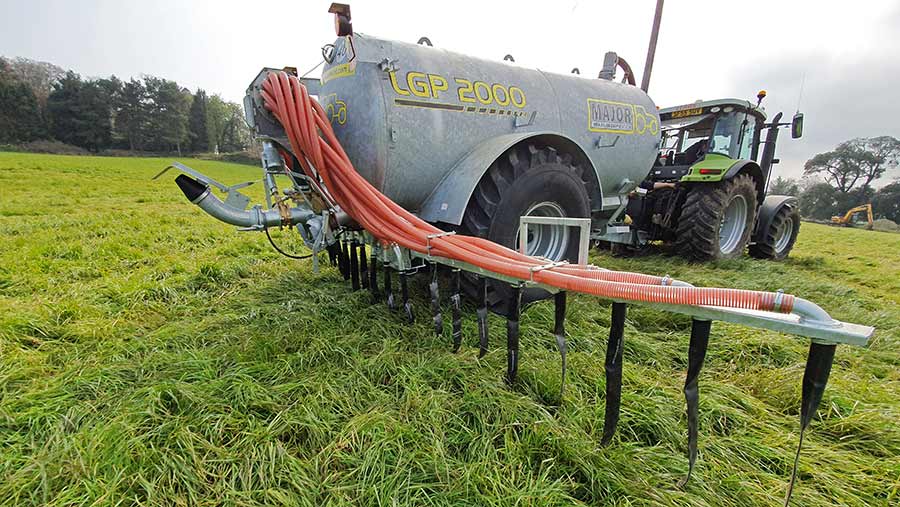NI farmers face BPS penalties under updated nutrient programme

Farmers in Northern Ireland are being warned that failure to comply with tougher rules on the application of chemical fertilisers containing phosphorus could see them facing Basic Payment Scheme (BPS) reductions.
Farmers must undertake new soil sampling and record keeping procedures under NI’s revised Nutrient Action Programme (NAP) 2019-2022.
One of the major changes facing farmers is the requirement for a soil analysis that demonstrates if there is a crop need for phosphorus before applying chemical phosphorus fertiliser.
See also: NI farmers facing tougher slurry spread controls
In addition, from 1 January 2020, all grassland farmers using chemical phosphorus fertiliser or a phosphorus rich manure will be required to draw up a fertilisation plan that calculates how much nitrogen and phosphorus will be needed to meet the crop’s requirement.
This is to make sure they are keeping within new maximum phosphate fertiliser application limits for extensively managed grassland.
Failure to comply with the new measures on chemical phosphorus fertilisers will be regarded as a breach of cross-compliance requirements.
Such a breach could result in reductions to BPS and any agri-environment scheme payments.
The fertilisation plan must be kept on farm for five years and will need to be available in the event of a cross-compliance inspection.
‘Plan ahead’
The Department for Agriculture, the Environment and Rural Affairs (Daera) is reminding farmers they need to plan ahead and make sure they have a valid soil analysis in advance of wanting to apply any phosphate fertilisers.
It advises that October though to February is a good time for soil sampling, provided there has been no organic manure, lime or bagged fertiliser applied in the previous three months.
Soil sampling can be arranged through Daera and will cost about £9/sample.
Other key changes facing farmers as part of the NAP include:
- Tighter slurry spreading restrictions from 30 September-15 October. Farmers spreading during this period, or during February, need to leave a 15m, rather than 10m, buffer strip by any waterway (30m for lakes). The maximum slurry application limit has also been reduced from 50m3/ha to 30m3/ha.
- Dairy farmers should be aware that from 1 January 2020, the N excretion rate has been increased from 91kgN/cow/year to 100kgN/cow/year. This will result in dairy farmers requiring more acres a cow from next year to meet the nitrogen loading limits (170kgN/ha/year). However, N excretion rates for the other categories of cattle have decreased slightly. The nitrogen and phosphorus excretion rates for different poultry production systems have also been updated.
- From 1 February 2021, slurry contractors are required to only spread slurry using Low Emission Slurry Spreading Equipment, such as dribble bars and trailing shoe methods. This requirement will also apply to cattle farms with more than 200 livestock units, or pig farms with total annual livestock manure nitrogen production of 20,000kg from 1 February 2022.
More detailed guidance notes on the new rules are expected later this year.
The exact format and content of the fertilisation plan is expected to be outlined in this guidance.
